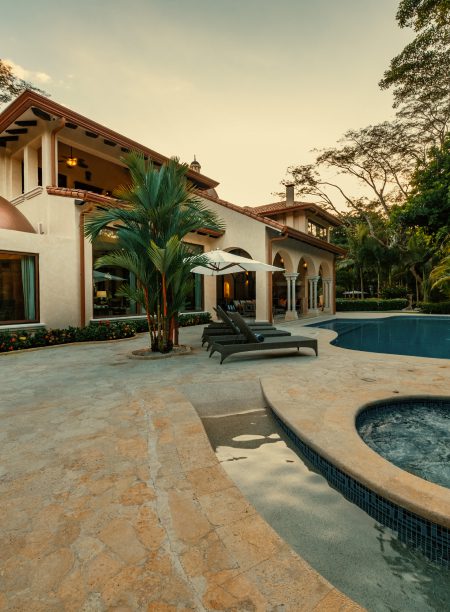Costa Rica is known for its ecological wonders. Almost one-third of the country is covered with evergreen forests. Traveling to the Pacific Coast of Costa Rica, along the Nicoya and Dulce, you will encounter palm trees while mangroves will welcome you on the Caribbean Coast. But the country is not to be mistaken as the hub of marine life only. The diversity of reptiles thrives here in their natural habitat, calling national parks and other protected areas their home. You will meet the world’s fastest-running lizard and the iguanas of Costa Rica, known for their spiny tail. Isn’t it amazing?
The varied life zones of Costa Rica make it a favorite among biologists. Mammalian life is varied here—you will see monkeys, sloths, and anteaters—special guests from South America. And North American species like wildcats, otters, foxes, deer, weasels, and coyotes will be there saying hi to you.
Apart from the exotic diversity of wildlife in Costa Rica, you can also meet the diverse bird species spanning the country, monitoring you and ensuring you enjoy their country wholeheartedly.
Here are some interesting facts about Costa Rica when it comes to its biodiversity –
- Costa Rica hosts 5% of the world’s biodiversity, featuring an exotic diversity of tropical flora and fauna.
- National parks and protected areas cover 25% of its land, the highest percentage globally.
- Corcovado National Park is home to big cats, tapirs, and all four Costa Rican monkey species.
- Tortuguero National Park hosts spider, howler, and white-throat Capuchin monkeys, three-toed and two-toed sloths, and 320 bird species. It is also a critical nesting site for endangered green turtles.
- Monteverde Cloud Forest Reserve contains nearly 2,000 plant species, over 400 bird species, and more than 100 mammal species.
- Costa Rica is a biodiversity center for reptiles and amphibians.
Weather Conditions in Costa Rica
Officially known as the Republic of Costa Rica, this tropical haven is surrounded by the Pacific Coast to the West and the Caribbean Coast to the East. It experiences tropical weather year-round, making every time the best time to plan a family vacation here, whether you love adventure, relaxation, or COFFEE.
In Costa Rica, you can experience two distinct seasons —dry and wet.
The country experiences the dry season from December to April, synonymous with beach activities. Bring sunglasses, wide-brimmed hats, and sunscreen to make the most of your beach vacation. April is the driest month in Costa Rica, with almost no rain.
When it comes to the best month to visit Costa Rica, you cannot doubt June. This is when the rainy season starts, and everything flourishes again. For locals, June and July are the “Little Summer” months with less frequent rain in the afternoon.
July and August are when families can start to make their way to this tropical paradise. August, September, and October are the greenest months, during which you can enjoy the best of Costa Rica, i.e., biodiversity. The exotic diversity of flora and fauna comes to life during the green season. But there is one twist —October is the driest month on the Caribbean side, whereas the greenest on the Pacific side. Don’t forget to bring your umbrella and quick-drying clothes when traveling during the green season.
Common Reptiles Found in Costa Rica
Trump-tail Gecko
The Trump-tail Gecko is a nocturnal Costa Rica lizard living in tropical, rainy forests. It maneuvers its movements up trees and rocks easily using sticky toe pads. Its importance in controlling insect populations is crucial for ecological balance.
Casque-headed Lizards
Casque-headed lizards have a bony casque on their heads for protection and temperature control. They are also good climbers and especially inhabit forested localities. They help to control insects and are useful in the dispersal of seeds.
Green Basilisk
The Green Basilisk is also known as the “Jesus Christ Lizard” because of its ability to run on water. It lives near riverbanks in tropical rainforests and is omnivorous, eating insects, small animals, and plants. Thus, its adaptation to running on water and omnivorous behavior is imperative to the fitness of its environment.
Anoles
- Pug-nosed Anole: Found in lower montane forests, identified by its blunt snout. It plays a role in controlling insect populations.
- Stream Anole: Mud banks often line the vast wetland. They are very good swimmers and play a balancing role in aquatic ecosystems by feeding on insects and other small invertebrates.
- Green Giant Canopy Anole: Found at high forest canopy levels, large and brightly colored. They play a role in insect and seed distribution. It further helps in controlling the insect population.
- Slender Anole: Found in the lowland forests, well adapted to climbing. It plays a role in maintaining insect populations at normal levels.
Green Iguana
Green Iguanas are very common in rainy forests, especially around the city. In nature, they are herbivores, feeding on leaves, flowers, and fruits. Their feeding helps them control the overpopulation of vegetation. However, Costa Rica iguanas are threatened by habitat, pets, and hunting.
Boid Snakes
- Mesoamerican Boa Constrictor: This non-venomous snake plays a role in regulating small mammals and bird populations. Its habitat is from forests to very arid regions.
- Annulated Tree Boa: These nocturnal and arboreal boos are primarily found in rainforests. They face threats from habitat destruction but are vital for controlling small mammal populations.
- Dipsadid Snakes/Red Coffee Snakes: Small, non-venomous, reddish-brown Costa Rican snakes feed on small amphibians and invertebrates whose populations they help regulate.
Vipers and Pitvipers
- Picado’s Jumping Pitviper: Found in the lowland rainforests, it is known for its leaping strike and performs a balancing role in small mammal control.
- Fer-de-lance: They can be found in various habitats. This species is very aggressive and important for controlling small mammal populations.
- Side-striped Palm-Pitviper: Arboreal, found on palm trees, conspicuous by the side stripes; important in regulating small mammal and bird populations.
- Middle American Rattlesnake: This species is found in dry forests. It is known for its rattling sound and plays a crucial role in controlling rodent populations.
- Eyelash Palm-Pitviper: Found in rainforests, characterized by eyelash-like scales; important in the balance of small mammals and birds.
- Hognosed Pitviper: Small with a distinctive upturned snout; it is found in forest leaf litter and is important for the regulation of small vertebrate populations.
Conservation Efforts for Costa Rican Reptiles
Human activities such as deforestation, urbanization, and illegal wildlife trade have negatively affected reptile communities in Costa Rica. These adverse effects have two impacts – habitat loss and fragmentation.
A variety of conservation measures are put in place to overcome these threats, including protection and restoration of habitat, habitat corridor linking, wildlife law enforcement, and promoting sustainability with local and international organizations. The creation of protected areas, wildlife corridors, and community-based projects is, therefore, important in habitat preservation and the survival of the tropical fauna.
Conclusion
Reptilian diversity is vast here, which is an indication of the existence of different ecosystems in Costa Rica, and effective conservation measures are put in place. Their existence, from geckos to vipers, takes paramount roles in maintaining ecological serenity or in balancing the ecosystem. This is why habitat protection is very important for the survival of Costa Rica reptiles and keeping the country beautiful and home to several reptiles.
For those who want to experience the magic of tropical biodiversity, Villa Firenze offers this unique opportunity. With rainforests around the property, the chances of seeing unique Costa Rican reptiles will be high. This will make your stay not only pleasurable but also educational.
Be part of the adventure and support eco-tourism and local activities with Costa Rica villas.











